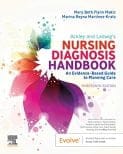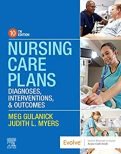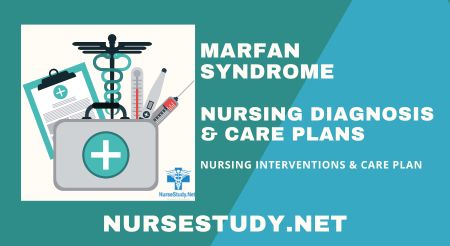What is Marfan Syndrome
Marfan Syndrome is a genetic disorder that affects the body’s connective tissue, which provides support for organs and other structures. This condition can cause a variety of symptoms including skeletal, cardiovascular, and ocular problems, as well as issues with the lungs and skin. It is caused by a mutation in the FBN1 gene.
Nursing Diagnosis Definition for Marfan Syndrome: Impaired Physical Mobility related to joint laxity and musculoskeletal abnormalities, as evidenced by difficulty in ambulation and limited range of motion.
Defining Characteristics of Marfan Syndrome:
- Hyperextensible joints
- Arachnodactyly (long, slender fingers)
- Pectus excavatum or carinatum (abnormal chest shape)
- Scoliosis (abnormal curvature of the spine)
- Joint pain and stiffness
- Fatigue with exertion
- Mitral valve prolapse
- Aortic root dilatation
Subjective:
- Client reports difficulty in performing daily activities and ambulation.
- Client expresses frustration and concern about limited mobility and joint pain.
Objective:
- Limited range of motion in joints.
- Visible deformities, such as scoliosis or pectus deformities.
- Presence of hyperextensible joints.
- Fatigue and decreased endurance.
- Auscultation reveals a heart murmur or abnormal heart sounds.
- Echocardiogram shows aortic root dilatation or mitral valve prolapse.
Related Factors:
- Genetic mutation in the FBN1 gene.
- Inheritance of Marfan syndrome from a parent.
- Connective tissue abnormalities.
Risk Population:
Individuals with a family history of Marfan syndrome or those with known mutations in the FBN1 gene.
Associated Problems:
- Joint dislocations and subluxations.
- Aortic dissection or rupture.
- Respiratory complications due to chest deformities.
- Visual problems, such as myopia and lens dislocation.
- Fatigue and decreased endurance.
- Emotional distress and anxiety related to the chronic nature of the condition and its impact on daily life.
Suggestions for Use:
- Assess the client’s mobility, range of motion, and joint stability regularly.
- Monitor cardiac function through regular auscultation and echocardiograms.
- Educate the client and family about the signs and symptoms of aortic dissection and the importance of seeking immediate medical attention.
- Provide support and resources for managing emotional distress and anxiety.
Alternative NANDA Diagnoses:
- Chronic Pain related to musculoskeletal abnormalities and joint laxity.
- Risk for Injury related to joint instability and the risk of dislocations.
- Impaired Gas Exchange related to respiratory compromise secondary to chest deformities.
- Disturbed Body Image related to visible deformities and physical limitations.
- Anxiety related to the chronic nature of Marfan syndrome and its impact on daily life.
Usage Tips:
- Collaborate with a multidisciplinary team, including a cardiologist, geneticist, and orthopedic specialist, to develop a comprehensive care plan.
- Encourage the client to engage in regular physical therapy to improve mobility and joint stability.
- Support the client in accessing adaptive equipment or assistive devices to enhance independence in daily activities.
- Provide education about the importance of regular follow-up appointments and genetic counseling for family planning.
NOC Outcomes:
- Mobility: Joint Function
- Pain Level
- Respiratory Status: Gas Exchange
- Body Image
- Coping
NOC Results:
- Improved joint function and mobility.
- Reduced pain levels.
- Optimal gas exchange and respiratory function.
- Enhanced body image and self-esteem.
- Improved coping strategies and psychological well-being.
NIC Interventions:
- Mobility Enhancement:
- Assess the client’s mobility and level of joint stability.
- Collaborate with physical therapy to develop an exercise program tailored to the client’s abilities and needs.
- Encourage the use of assistive devices, such as braces or orthotics, to support joint stability and enhance mobility.
- Teach proper body mechanics and techniques for safe ambulation and movement.
- Pain Management:
- Assess the client’s pain level, location, and characteristics.
- Administer prescribed pain medications as ordered and monitor their effectiveness.
- Apply heat or cold therapy as appropriate to alleviate joint pain and stiffness.
- Teach relaxation techniques, guided imagery, or distraction techniques to help manage pain.
- Respiratory Monitoring:
- Assess the client’s respiratory rate, depth, and effort regularly.
- Monitor oxygen saturation levels and auscultate lung sounds.
- Encourage deep breathing exercises and effective coughing techniques to promote optimal lung function.
- Collaborate with respiratory therapy to provide chest physiotherapy if needed.
- Body Image Enhancement:
- Provide emotional support and reassurance to the client regarding visible deformities and physical limitations.
- Encourage open communication about body image concerns and provide a safe space for the client to express their feelings.
- Refer the client to support groups or counseling services to address body image issues and promote self-acceptance.
- Educate the client about adaptive clothing options and resources for finding comfortable and stylish attire.
- Anxiety Reduction:
- Assess the client’s anxiety levels and triggers.
- Teach relaxation techniques, such as deep breathing and progressive muscle relaxation.
- Encourage the use of coping mechanisms, such as journaling or engaging in hobbies, to reduce anxiety.
- Provide information and resources about support groups or counseling services for managing anxiety related to chronic conditions.
- Health Education:
- Provide comprehensive education about Marfan syndrome, including its causes, signs and symptoms, and potential complications.
- Educate the client and their family about the importance of regular follow-up appointments with specialists and genetic counseling.
- Teach strategies for preventing injuries, such as avoiding high-impact activities and practicing joint protection techniques.
- Provide information about available resources, such as support organizations and online communities, for additional support and information.
Marfan Syndrome Nursing Care Plan
Chronic Pain Nursing Care Plan for Marfan Syndrome
Nursing Diagnosis: Chronic Pain related to musculoskeletal abnormalities and joint laxity.
Related Factors/Causes:
- Joint hypermobility and instability due to Marfan syndrome.
- Connective tissue abnormalities leading to chronic joint inflammation.
- Muscle imbalances and compensatory movements due to skeletal deformities.
- Dislocations and subluxations of joints causing tissue damage and inflammation.
Desired Outcomes:
- The client will report a reduction in pain intensity from a numeric rating scale of 8/10 to a 4/10 within two weeks.
- The client will demonstrate improved ability to perform activities of daily living without significant pain within one month.
- The client will exhibit decreased reliance on pain medications for pain management within three months.
- The client will express satisfaction with pain management strategies and improvements in overall quality of life.
Marfan Syndrome Nursing Interventions:
- Assess and document the client’s pain level using a standardized pain scale at regular intervals.
- Identify the location, characteristics, and exacerbating factors of the client’s pain to guide interventions.
- Collaborate with the interdisciplinary team to develop an individualized pain management plan.
- Administer prescribed pain medications as ordered and monitor their effectiveness.
- Explore non-pharmacological pain management strategies, such as heat or cold therapy, relaxation techniques, and distraction techniques.
- Encourage the client to engage in regular physical therapy to improve joint stability and muscle strength, thereby reducing pain.
- Teach the client about proper body mechanics and joint protection techniques to minimize pain during activities of daily living.
- Assist the client in identifying and utilizing assistive devices or adaptive equipment to reduce pain and enhance functional mobility.
- Provide emotional support and reassurance to the client, addressing any fears or concerns related to pain and its impact on daily life.
- Educate the client and family about the importance of adherence to the pain management plan and the potential risks of over-reliance on pain medications.
- Collaborate with the client to develop a holistic approach to pain management, considering physical, psychological, and spiritual aspects of care.
- Evaluate the effectiveness of pain management interventions regularly and make adjustments as needed based on the client’s feedback and response.
Risk For Injury Nursing Care Plan for Marfan Syndrome
Nursing Diagnosis: Risk for Injury related to joint instability and the risk of dislocations.
Related Factors/Causes:
- Joint laxity and hypermobility associated with Marfan syndrome.
- Muscle imbalances and weakness due to skeletal abnormalities.
- Connective tissue abnormalities that increase the vulnerability of joints to injury.
- Impaired proprioception and balance as a result of joint laxity and musculoskeletal abnormalities.
Desired Outcomes:
- The client will maintain joint stability and prevent dislocations or subluxations.
- The client will demonstrate safe and proper body mechanics during activities of daily living.
- The client will identify potential risk factors for injury and take appropriate preventive measures.
- The client will verbalize an understanding of safety precautions to minimize the risk of falls and accidents.
Nursing Interventions for Marfan Syndrome:
- Assess the client’s mobility, joint stability, and muscle strength to identify areas of vulnerability.
- Educate the client and family about joint protection techniques, such as avoiding excessive force or strain on joints and maintaining proper posture.
- Collaborate with physical therapy to develop an exercise program focused on improving muscle strength and joint stability.
- Encourage the use of assistive devices, such as braces or orthotics, to support joint stability during activities.
- Assist the client in identifying environmental hazards and modifying the living space to minimize the risk of falls or accidents.
- Teach the client and family about the signs and symptoms of joint dislocation or subluxation, emphasizing the importance of seeking immediate medical attention.
- Provide education on proper body mechanics during activities of daily living, including lifting, carrying, and reaching.
- Implement fall prevention strategies, such as ensuring adequate lighting, removing obstacles, and using non-slip mats in the bathroom.
- Encourage the client to participate in balance and proprioception exercises to improve stability and reduce the risk of falls.
- Collaborate with the client to develop a personalized safety plan, including strategies for navigating stairs, using assistive devices, and avoiding high-risk activities.
- Evaluate the client’s understanding and implementation of safety measures regularly, providing reinforcement and clarification as needed.
- Monitor the client for any signs of joint instability or injury, documenting and reporting findings promptly.
Marfan Syndrome Nursing Test Questions
Question 1: Which of the following is a common cardiovascular manifestation of Marfan syndrome?
A) Pectus excavatum
B) Mitral valve prolapse
C) Arachnodactyly
D) Scoliosis
Answer: B) Mitral valve prolapse
Rationale: Mitral valve prolapse is a common cardiovascular manifestation of Marfan syndrome. It occurs when the valve between the left atrium and left ventricle doesn’t close properly. Pectus excavatum is a chest deformity, arachnodactyly refers to long, slender fingers, and scoliosis is an abnormal curvature of the spine. While these may also be present in individuals with Marfan syndrome, mitral valve prolapse is specifically associated with the condition.
Question 2: A client with Marfan syndrome is at risk for which of the following complications?
A) Aortic dissection
B) Diabetic ketoacidosis
C) Pulmonary embolism
D) Celiac disease
Answer: A) Aortic dissection
Rationale: Aortic dissection is a life-threatening complication of Marfan syndrome. Due to the weakened connective tissue, the inner layer of the aorta can tear, leading to blood flow between the layers of the aortic wall. This can cause severe pain and, if not promptly treated, can result in aortic rupture. Diabetic ketoacidosis is associated with diabetes, pulmonary embolism is related to blood clot formation, and celiac disease is an autoimmune disorder affecting the small intestine. While these conditions may occur independently, they are not directly associated with Marfan syndrome.
Question 3: When providing care for a client with Marfan syndrome, which of the following should the nurse prioritize?
A) Promoting physical activity to improve muscle strength
B) Monitoring for signs of joint instability and dislocations
C) Assisting with the management of chronic pain
D) Educating the client about the importance of regular genetic counseling
Answer: B) Monitoring for signs of joint instability and dislocations
Rationale: Joint instability and dislocations are common in individuals with Marfan syndrome due to the joint laxity associated with the condition. The nurse should prioritize monitoring for signs of joint instability, such as pain, swelling, or limited range of motion, and provide appropriate interventions to prevent dislocations. While the other options are important aspects of care for clients with Marfan syndrome, monitoring for joint instability takes precedence to prevent further complications.
Question 4: A client with Marfan syndrome is prescribed beta-blocker therapy. Which of the following is the primary reason for this medication choice?
A) To improve joint stability
B) To prevent aortic dissection
C) To reduce chronic pain
D) To promote weight loss
Answer: B) To prevent aortic dissection
Rationale: Beta-blockers are commonly prescribed to clients with Marfan syndrome to reduce the risk of aortic dissection. Beta-blockers help to lower blood pressure and heart rate, reducing the stress on the aorta and decreasing the risk of aortic tears. While beta-blockers may indirectly help with joint stability and chronic pain management, the primary reason for their use in Marfan syndrome is the prevention of aortic dissection.
Question 5: A nursing student asks the instructor about the inheritance pattern of Marfan syndrome. The instructor should provide which response?
A) Autosomal recessive
B) X-linked recessive
C) Autosomal dominant
D) Multifactorial
Answer: C) Autosomal dominant
Rationale: Marfan syndrome is inherited in an autosomal dominant pattern, meaning that a person only needs to inherit one copy of the abnormal gene from either parent to develop the condition. There is a 50 percent chance of an affected parent passing the condition on to each of their children. Autosomal recessive inheritance requires both parents to carry and pass on a copy of the abnormal gene. X-linked recessive inheritance is associated with genes located on the X chromosome. Multifactorial inheritance involves a combination of genetic and environmental factors. However, in the case of Marfan syndrome, the correct answer is autosomal dominant inheritance.
Nursing References
Ackley, B. J., Ladwig, G. B., Makic, M. B., Martinez-Kratz, M. R., & Zanotti, M. (2020). Nursing diagnoses handbook: An evidence-based guide to planning care. St. Louis, MO: Elsevier.
Gulanick, M., & Myers, J. L. (2022). Nursing care plans: Diagnoses, interventions, & outcomes. St. Louis, MO: Elsevier.
Ignatavicius, D. D., Workman, M. L., Rebar, C. R., & Heimgartner, N. M. (2020). Medical-surgical nursing: Concepts for interprofessional collaborative care. St. Louis, MO: Elsevier.
Silvestri, L. A. (2020). Saunders comprehensive review for the NCLEX-RN examination. St. Louis, MO: Elsevier.
Best Nursing Books and Resources
These are the nursing books and resources that we recommend.
NurseStudy.net is a participant in the Amazon Services LLC Associates Program. Included below are affiliate links from Amazon at no additional cost from you. We may earn a small commission from your purchase. Please see our Privacy Policy

The Nursing Diagnosis Handbook E-Book: An Evidence-Based Guide to Planning Care
This is an excellent reference for nurses and nursing students. While it is a great resource for writing nursing care plans and nursing diagnoses, it also helps guide the nurse to match the nursing diagnosis to the patient assessment and diagnosis.
This handbook has been updated with NANDA-I approved Nursing Diagnoses that incorporates NOC and NIC taxonomies and evidenced based nursing interventions and much more.

NANDA International Nursing Diagnoses: Definitions & Classification, 2021-2023
All introductory chapters in this updated version of a ground-breaking text have been completely rewritten to give nurses the knowledge they require to appreciate assessment, its relationship to diagnosis and clinical reasoning, and the goal and use of taxonomic organization at the bedside.

Nursing Care Plans: Nursing Diagnosis and Intervention
It contains more than 200 care plans that adhere to the newest evidence-based recommendations.
Additionally, it distinguishes between nursing and collaborative approaches and highlights QSEN competencies.
Disclaimer:
Please follow your facilities guidelines, policies, and procedures.
The medical information on this site is provided as an information resource only and is not to be used or relied on for any diagnostic or treatment purposes.
This information is intended to be nursing education and should not be used as a substitute for professional diagnosis and treatment.


